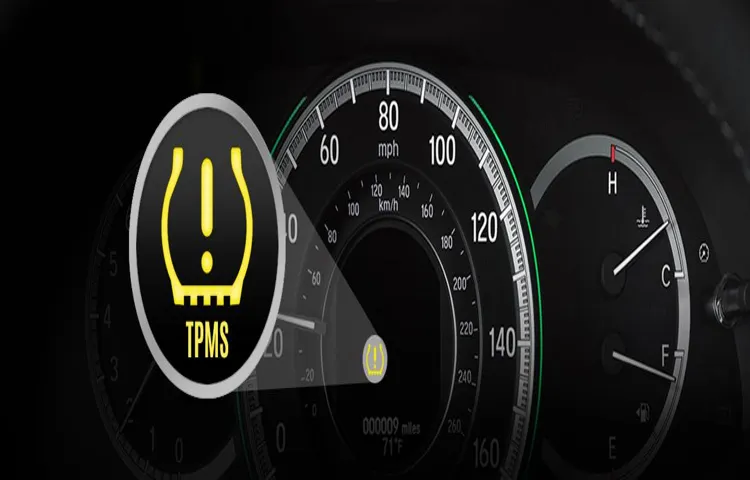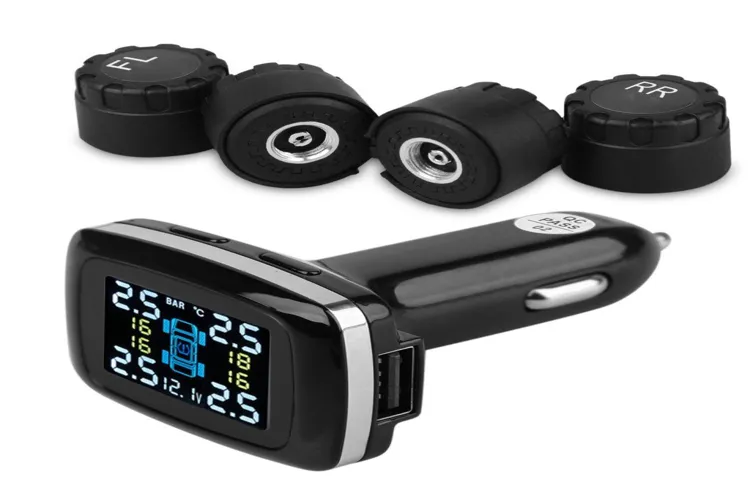Have you ever noticed a sudden drop in your car’s fuel efficiency, or have you felt an unusual vibration as you drive down the road? If so, your car’s tire pressure sensor may be the culprit. This sensor is responsible for alerting you when your tire pressure drops below the recommended level. However, sometimes the reset button doesn’t work, and you’re left wondering what to do.
Luckily, resetting your car tire pressure sensor is a simple process that can be done in just a few minutes. In this blog post, we’ll walk you through the steps of resetting your car’s tire pressure sensor so that you can drive with confidence and peace of mind.
Check Tire Pressure
When it comes to maintaining your car’s tire pressure, it’s important to do so regularly for optimal performance and safety. One important step in this process is knowing how to reset your car’s tire pressure sensor. Typically, you can reset the sensor through your vehicle’s dashboard or a reset button located near the tires.
To check your tire pressure, use a tire pressure gauge to ensure each tire is at the manufacturer’s recommended levels. If the pressure is too low, add air until it reaches the recommended amount. Ignoring low tire pressure can lead to decreased fuel efficiency and even dangerous blowouts on the road.
By regularly checking your tire pressure and resetting your sensor, you can ensure a smoother ride and better fuel economy.
Diagnose the Problem
When your car is experiencing handling issues or feels less responsive than usual, checking tire pressure should be one of your first steps. A tire that is underinflated will not only affect your vehicle’s handling but can also lead to decreased fuel efficiency. Fortunately, checking tire pressure is simple and can be done with a tire pressure gauge.
First, unscrew the cap from the valve stem of each tire and apply the gauge firmly onto the stem. The gauge will provide a reading of the tire pressure in pounds per square inch (PSI). Compare the gauge’s reading with the recommended pressure for your car, which can be found in the owner’s manual or on a sticker inside the driver’s door jamb.
If the tire pressure is too low, add air until the correct pressure is achieved. Remember to check tire pressure regularly, as tires lose air over time due to natural leakage. By keeping your tires properly inflated, you can improve your car’s handling, fuel efficiency, and safety on the road.

Manually Reset the TPMS
If you drive a newer car, chances are it’s equipped with a Tire Pressure Monitoring System (TPMS). This nifty safety feature ensures your tires are properly inflated, reducing the risk of a tire blowout or a flat tire. However, if your TPMS malfunctions or you replace your tires, you may need to manually reset it.
To do so, start by checking the tire pressure in each tire with a gauge, ensuring they’re inflated to the manufacturer’s recommended levels. Next, locate the TPMS reset button, usually found on the dashboard or glove box compartment. Press and hold the button until the TPMS indicator light blinks.
Within a few minutes, the indicator light should turn off, indicating the system has been reset. By checking your tire pressure regularly and resetting the TPMS as needed, you’ll maintain optimal tire performance and ensure a safer driving experience.
Resetting with a TPMS Tool
If you’ve noticed that your car tire pressure sensor light is on, but your tires look fine to you, don’t worry – it’s likely just an issue with the TPMS system. To reset your car tire pressure sensor, you’ll need to use a TPMS tool. This tool will communicate with your car’s TPMS system to reset the pressure readings and turn off the warning light.
With the tool, you can set the appropriate pressure levels for each tire and ensure that your car is operating safely and efficiently on the road. Remember, maintaining proper tire pressure isn’t just important for your car’s performance – it can also contribute to better fuel economy and even extend the life of your tires. So, don’t hesitate to invest in a TPMS tool and keep your car running at its best.
Choose an Appropriate TPMS Tool
When it comes to resetting your vehicle’s TPMS system, it’s important to choose the right tool for the job. There are a variety of TPMS tools available on the market, but not all of them will work with your specific make and model of vehicle. Before making a purchase, it’s important to do your research and ensure that the tool you choose is compatible with your vehicle’s TPMS system.
A good TPMS tool will allow you to reset your system quickly and easily, without the need for any professional assistance. Additionally, many TPMS tools offer other useful features, such as the ability to diagnose potential issues with your TPMS system or to monitor your tire pressure in real-time. So whether you’re a professional mechanic or a DIY enthusiast, investing in a reliable TPMS tool can save you time, money, and hassle down the road.
Connect the TPMS Tool to Your Car
To reset the TPMS system on your car, you will need to connect your TPMS tool to your vehicle. The process is relatively simple, and most TPMS tools come with comprehensive instructions. First, locate the OBD port in your car and plug in the tool.
Once the tool is on, it will scan for the TPMS sensors on your wheels. When the scan is complete, you will be able to view the sensor readings for each tire on the tool’s screen. The tool will then prompt you to reset the sensors to their default settings.
Confirm the reset, and the TPMS system should be recalibrated. Remember that resetting the TPMS system is essential if you have changed tires or experienced a flat tire. Not only will a TPMS reset ensure your car runs smoothly, but it will also keep you safe while driving.
So, why not invest in a TPMS tool today?
Navigate the Tool to the Reset Function
TPMS ToolResetting your tire pressure monitoring system (TPMS) with a TPMS tool is a straightforward process. First, you’ll need to locate the reset function within the tool’s menu. This can vary depending on the specific tool you’re using, but it’s typically found under the “TPMS” or “Reset” category.
Once you’ve found the reset function, select it and follow the on-screen prompts. The TPMS tool will communicate with each of your vehicle’s tire pressure sensors to reset the system, which will allow it to accurately monitor your tire pressures once again. Overall, resetting your TPMS system with a TPMS tool is a simple process that can save you time and money compared to visiting your local mechanic or dealership.
So, if you’re experiencing issues with your TPMS system, consider investing in a TPMS tool to reset it yourself.
Visit a Mechanic
If you’re wondering how to reset your car’s tire pressure sensor, one option is to take it to a mechanic. Typically, when your tires are low on air, the sensor will alert you with a warning light on the dashboard. However, after you fill up your tires, the sensor may still be triggered, leaving you scratching your head on how to turn it off.
This is where a trusted mechanic can help. They have the necessary tools and expertise to diagnose the problem and reset the tire pressure sensor for you. Plus, they can also inspect your tires to ensure they are properly inflated and identify any other potential issues that may be causing the warning light to come on.
While it may cost you a bit of money for a professional to handle it, having the peace of mind that your car is in good working order is definitely worth it in the long run. So don’t hesitate to visit a mechanic for assistance with resetting your tire pressure sensor.
When to Take Your Car to a Mechanic
Knowing when to take your car to a mechanic is essential to keep your vehicle running smoothly and safely. One of the most critical signs is when your car starts making unusual noises, such as knocking, squealing, or roaring. Additionally, if you notice any warning lights illuminated on your dashboard, it’s time to take your car for a check-up.
Other indications that your vehicle needs professional attention are issues with brakes, steering, or transmission. If you feel vibrations or strange movements while driving, it’s best to seek help immediately. Remember that regular maintenance can prevent the need for costly repairs, so it’s essential to follow your manufacturer’s recommendations for oil changes, tire rotations, and tune-ups.
Don’t wait until your car breaks down on the road to realize it’s time for a visit to the mechanic. By staying aware of your car’s performance and addressing any issues promptly, you can keep your vehicle running smoothly for years to come.
What a Mechanic Can Do for You
Looking for reliable car maintenance? Look no further than your local mechanic. A mechanic can do much more than just change your oil; they can diagnose and repair a range of mechanical issues, ensuring that your car is running safely and efficiently. From replacing a worn-out battery to fixing a faulty transmission, a mechanic has the expertise and tools necessary to address even the most complex problems.
Plus, they can offer preventative maintenance services, like brake inspections and fluid flushes, to help keep your car in top condition. So why take chances with your vehicle’s safety? Visit your trusted mechanic today and ensure that your car is ready for the road ahead.
Conclusion
In conclusion, resetting your car’s tire pressure sensor may seem daunting at first, but it’s simpler than you think. Just like hitting the reset button on a video game, resetting your tire pressure sensor is like giving your car a fresh start. And even if you’re not a gamer, you can rest easy knowing that resetting your tire pressure sensor won’t require any complex coding skills or cheat codes.
So go ahead and give your car the reset it deserves, and remember to always keep your tires inflated to the proper pressure for a smooth and safe ride.”
FAQs
What causes the tire pressure sensor to need a reset?
The sensor may need to be reset due to a change in tire pressure or a malfunction in the sensor itself.
How often should I check my tire pressure sensor?
It is recommended to check your tire pressure sensor at least once a month, or before long trips and extreme weather conditions.
Can I reset my car tire pressure sensor myself?
Yes, most car models have a reset button or option that can be found in the owner’s manual or by searching online.
What happens if I ignore the tire pressure sensor warning light?
Ignoring the warning light can lead to decreased fuel efficiency, tire wear, and even tire failure or blowouts.
Will resetting the tire pressure sensor negatively impact my car’s performance?
No, resetting the sensor should not negatively impact your car’s performance. In fact, it can help improve fuel efficiency and prevent unnecessary tire wear.
How can I fix a malfunctioning tire pressure sensor?
If resetting the sensor does not work, it may need to be replaced by a professional mechanic.
Can extreme cold or heat affect my car’s tire pressure sensor?
Yes, extreme temperatures can cause fluctuations in tire pressure and may trigger the sensor to need a reset.

